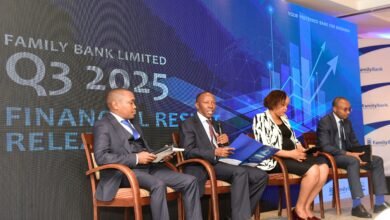
By Murugi Ndai
Small and Medium Enterprises (SMEs) are often hailed as the heartbeat of Kenya’s economy. They employ millions, power local innovation, and contribute nearly 40% of GDP. Yet, these same enterprises are suffocating under the weight of two government-induced burdens: runaway pending bills and a domestic borrowing appetite that crowds out credit leaving SMEs starved of affordable loan facilities.
Let’s start with pending bills. As of FY 2024/25, arrears owed to suppliers had ballooned to over KES 701 billion, with county governments accounting for KES 176.8 billion while the national government struggles with the Ksh.524.84 billion, according to the 2024/25 full year report by the Office of Controller of Budget (OCOB.
The state corporations had the most obligation of Ksh.404.33 billion while the other agencies had Ks.120.51 billion. The slight dip by the county bills from last year’s Ks.181.98 billion is not because counties suddenly discovered fiscal discipline — it was simply a reconciliation of Ksh.39.76 billion of the Nairobi County Government books.
In reality, both levels of government continue to delay payments, hiding behind endless ‘pending bills audits’ while businesses collapse. For SMEs, unpaid bills mean cash flow crises, layoffs, auctions, and loan defaults. Government is, in effect, financing itself on the backs of SMEs — and the casualties are piling up. Worse, the total pending bills allocation of the both levels of government in the 2025/26 FY Budgets is less than 10% of the total pending bills owed.
Then comes the borrowing problem. Kenya’s domestic public debt hit Ksh.6.31 trillion in July 2025 according to the CBK reports. For the FY 2025/26 deficit of KES 923 billion, the Treasury plans to borrow in a 75:25 split between domestic and external sources to bridge the gap.
On paper, this shields us from the volatility of the shilling. In practice, it locks SMEs out of the credit market. Commercial banks, which already hold 45% of government domestic debt, have little incentive to take risks on small businesses when government paper offers safety and returns.
The result? Lending to SMEs is squeezed, interest rates remain painfully high, and banks’ loan books are deteriorating with non-performing loans rising to 17.6% by June 2025 up from 16.4% same period last year. As at June, 2024, total loans and advances stood at a staggering between Ksh.3.9 trillion to Ksh.4.1 trillion.
President Ruto and CS Mbadi’s calls for banks to lower interest rates may sound noble, but they miss the point. In a free economy, interest rates follow market forces. As long as government is gobbling up domestic credit, SMEs will always be crowded out and no executive order can change that.
The outcome is obvious and tragic: SMEs are shrinking, jobs are disappearing, household incomes are falling, and poverty is creeping back up. This is the exact opposite of the Bottom-Up Economic Transformation Agenda (BETA) that was meant to empower ordinary Kenyans.
The way forward is simple but politically difficult. First, pay suppliers. Clearing pending bills should not be seen as a favour or charity it is honoring contracts for work done and goods and services delivered by SMEs to the 48 units of governments in Kenya. It is also the fastest way to inject liquidity into the economy and give SMEs breathing space.
Second, the government must walk the talk on austerity and go slow on unnecessary expenditures. The government should post-pone her gratification and control the urge to complete-all today at the alter of increased domestic borrowing. Without this, no amount of rhetoric will change the fact that SMEs are being cash squeezed.
Kenya’s entrepreneurs are resilient. They do not need handouts but fairness. The government should pay them what is owed and stop competing with them for credit. Until then, the executive cannot claim to be pro-SME not when her actions are saying the complete opposite.





